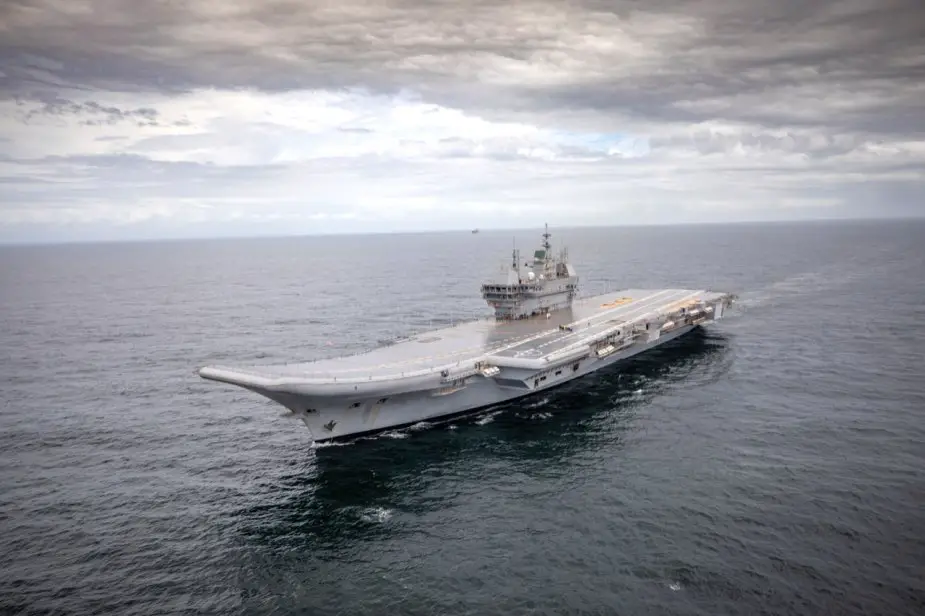Breaking news
India expects to choose French Rafale M fighter jets for Navy's INS Vikrant.
According to information published by the New Indian Express on June 20, 2023, India's Prime Minister, Narendra Modi, is expected to disclose an extensive contract for 26 Rafale Marine fighter jets during his trip to France.
Follow Navy Recognition on Google News at this link
 Indian Navy's aircraft carrier INS Vikrant. (Picture source: Indian MoD)
Indian Navy's aircraft carrier INS Vikrant. (Picture source: Indian MoD)
This outlet was the first to highlight that the Indian Navy favors the French deck-based Rafale Marine over the American F-18 Super Hornets. The cost of the jets is still to be announced, but according to sources, these versatile carrier-borne fighters will be more cost-effective than previous purchases made by the Indian Air Force. The acquisition will proceed through a government-to-government deal rather than an open tender process.
The Indian Navy has been on the hunt for an appropriate fighter jet to deploy on the aircraft carrier INS Vikrant, as a replacement for its aging MiG 29Ks. The search concluded with the Rafale Marine from Dassault, bearing over 80% similarities to the IAF’s Rafales. The potential savings from training, repairs, and maintenance owing to the shared features of the fleet made the Navy opt for the French jet.
Insiders report that aside from the benefit of fleet commonality, the Indian Navy leadership was taken with the Rafale-M's performance during a collaborative exercise and an operational test carried out in India. Following these evaluations, the Navy notified the Ministry of Defence that the Rafale-M was the optimal choice for their requirements.
The Ministry has structured a comprehensive contract for maintenance, spare parts, and training, which includes the creation of an onboard maintenance facility on INS Vikrant and another on land in Goa.
It will also entail training for the ground crew and pilots. The fighter jets will be furnished with advanced maritime systems, including maritime search radars capable of submarine detection, as well as warships.
India is currently developing a long-term strategy to produce indigenous deck-based fighters, in collaboration with the public sector company, Hindustan Aeronautics Ltd (HAL).
These twin-engine deck-based jets, designed and developed by the Aeronautical Development Agency and to be built by HAL, were initially showcased at Aero India in 2021.
However, their deployment will take a few more years. As a result, the Navy has chosen an outright purchase to cater to its immediate requirements. The Rafale-M and Boeing’s Super Hornet were in direct competition for the Indian Navy’s order.
Comparison between the two fighter jets
Starting with the physical attributes, the Super Hornet has a length of 60 ft 1.25 in, a wingspan of 44 ft 8.5 in, and a height of 16 ft. On the other hand, the Rafale M is a bit smaller with a length of 50.1 ft, a wingspan of 35.4 ft, and a height of 17.5 ft.
In terms of weight, the Super Hornet is heavier with an empty weight of 32,081 lb, a loaded weight of 47,000 lb, and a maximum takeoff weight of 66,000 lb. The Rafale M is lighter with an empty weight of 23,400 lb, a loaded weight of 33,000 lb, and a maximum takeoff weight of 54,000 lb.
When comparing the powerplants, both aircraft use two turbofans, but the Super Hornet's General Electric F414-400 turbofans are more powerful, delivering a dry thrust of 13,000 lbf each and 22,000 lbf with afterburner. The Rafale M's Snecma M88-2 turbofans generate a dry thrust of 11,250 lbf each and 16,860 lbf with afterburner.




























